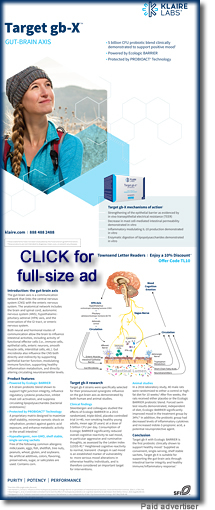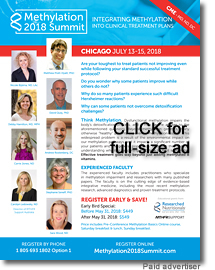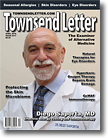|
Introduction
In December 1776, George Washington assessed the unmet needs of a beleaguered Continental Army and made a brilliant tactical decision, a new approach timelessly memorialized as Crossing the Delaware. Let's rally around that bold crossing. After this President's Day, imagine Port Townsend, Washington, as the launch point for crossing the Dental-Medical Divide. This column provides four Durham boats, ways health practitioners can work together to resupply their patients with health. I named this column "Ahh-portunity" since embarking involves the simple maneuver, "Open wide."
 Trench Warfare Trench Warfare
Treat periodontal disease to reduce systemic inflammation. At age 67, George Washington died suddenly from infection in the oral cavity. Whether it was strep throat, quinsy (peritonsillar abscess) or bacterial epiglottitis, the microbial battle began years earlier in the gingival crevices, before he became edentulous. A look at George Washington's ivory (not wooden!) dentures on my son's school field trip to Mount Vernon, Virginia, prompted me to explore the story.
My research was illuminated in my forthcoming textbook, by chapter author David Kennedy, DDS. He explains that gingival crevices are a battleground of dysbiosis, inflammation, and resulting obesity. Microbes in the mouth depend on the gingival crevices, where they secrete chemicals to make an environment that gives them the survival advantage. Oral flora differs from the intestinal microbiome in that it doesn't colonize until six months of age when the first teeth erupt and form gingival crevices.
Today we have antibiotics that would have cured George Washington. Why do most people have gingivitis? For one, antibiotics barely get into the crevices, making them poor performers in the mouth's trench warfare. Secondly, antibiotics potentially worsen gingivitis by giving offending fungi, protozoa, and parasites a survival advantage over bacteria. In the setting of a poor diet and sugar, infections are jumpstarted. Once infections are hunkered in their trenches, improving diet isn't sufficient to remedy gingivitis. Rooting out the offending organisms necessitates a dental and medical alliance.
Teeth (or at least one tooth) Are Sensory
Encourage patients to use their junk-food-free sense of taste to guide beverage selection. When our sense of taste is not overridden by added sugar, it can guide us to the minerals we need. Pedialyte © with its fortified zinc tastes good one time, and a few hours later it tastes awful once zinc needs are restored. A breakthrough non-caloric beverage called Good Idea © contains chromium to promote glucose control, and the chromium enhances the taste when body stores are inadequate. Similarly, water rich in iron tastes good to iron-deficient children, a longstanding observation called pica. Zinc, chromium and iron bind to and activate enzymes called metalloproteins, but how taste is messaged regarding total-body mineral status remains elusive.
Ancient Eastern medicine developed diagrams of postulated pathways of communication from the body's extremities to the teeth. Could these vague neural pathways be involved in communicating the body's mineral needs? I doubted so, until I met fellow explorer, Martin Nweeia, DMD, DDS. Dr. Nweeia became fascinated with the narwhal. This marine mammal's "tusk" was historically called the horn of the mythical unicorn. In actuality, it is neither tusk nor horn. It is a tooth!
Curiosity nudged Dr. Nweeia until he reasoned, "I'm a dentist and this is a tooth. Maybe I'm the one for the job." He crossed waters colder than Washington's Delaware for his comparative dentistry research. There, he discovered that the narwhal tooth has sensory functions. It can measure gradients such as temperature, electrolytes, and mineral concentrations. Living on land, we bring mineral water to us, but marine mammals go to the source of minerals, guided perhaps by their tooth. If humans also have sensory teeth, there is yet another reason to eat nutritiously – keeping a keen sense of mineral tastes.
Teledontics
Add a third dimension to metabolic pathways in order to assess patients' oxygen intake. Washington Crossing the Delaware is an 1851 commemorative painting famous for its three-dimensional as-if-I'm-there quality. Like painters, dentists work with a palate and skillfully make flat metabolic pathways jump out of the page, especially for supply of the most vital nutrient, oxygen!
My own dentist Kevin Fielding, DDS, explained the approach of the Pankey Institute. When he mentioned Mallampati score, the dental chair suddenly got uncomfortable. In medicine we are taught that Mallampati scores are important to assess for intubation, since it records clearance between the base of the tongue and the soft palate. Dentists appreciate the broader significance for assessing risk of upper airway obstruction and sleep apnea caused by a narrowed palate and oral cavity, even when tonsils and adenoids are not enlarged.
Teeth respond to the forces from neighboring muscles and soft tissue, a concept which forms the basis for orthodontics. My textbook chapter author Joseph Yousefian, DDS, explains another way teeth and oropharyngeal cavity communicate back and forth systemically, by responding to signals from the metabolic and epigenetic pathways, in "teledontic model." The orthodontic approach of utilization of headgear, functional appliances to improve the overbite, or extracting teeth to alleviate crowding can have a teledontic downside. They can prevent the pharyngorofacial complex forming the upper airway from attaining its full size, proper shape, and ability to take in oxygen.
Teledontics is very practical. For one, it adds physiologic perspective to the photos Weston Price, DDS, published in the 1930s, contrasting the faces of children who ate an ancestral diet with those who adopted a Western diet. The diet-dental connection is an important one.
Oxygen is an important and apparently overlooked nutrient. Now my screening for sleep apnea includes a brief "ahh-peration" for detection of clenching, small jaws, narrowed and crowded dental arches, and a high Mallampati score. Clenching is sometimes a physiologic adaptation to increase airway muscle tone and patency in order to obtain oxygen. Teledontic treatment to expand the upper airway can resolve clenching and its inherent side effects of damaging the temporomandibular joints, and developing small jaws and narrow upper airway. It also treats obstructive sleep apnea and its comorbidities. In sum, any clinical signs of oxygen deficiency, including frostbite, pulmonary hypertension, peripheral vascular disease, obesity, excessive daytime sleepiness and fatigue are now my clinical ahh-portunities.
 Opioid-Sparing Pain Control Opioid-Sparing Pain Control
Diversion Control is the name of the Drug Enforcement Agency's office that authorizes doctors and dentists to prescribe narcotic pain medications. Notice the word "diversion" which means routing something from its usual course. Now that our beleaguered healthcare system faces not mere diversion ditches but floodwaters, the government has enlisted its healthcare professionals to address the opioid crisis. Dentists and doctors alike are to grab oars and get patients to safe shores. But if not opioids, what should we use for pain management? Again, I turned to dentists.
I visited the large open-space dental operatory at University Padjadjaran in Bandung, Indonesia. Our group was amazed by the tranquility among the pediatric patients. "What type of anesthesia do you use?" I asked faculty member Helena Runkat, DDS. "Very little!" The approach to pain management was indeed opioid-sparing with acculturation that dentistry is a privilege and that the dentist is a friend, entertaining distraction, meditation, aromatherapy, hypnosis, and ways to relax the jaw. My favorite technique is an Eastern Medicine technique: Lips together, teeth apart, and tongue to the roof of the mouth.
I first learned about photobiomodulation to treat temporomandibular joint pain from Richard Godine, DVM, past-president of the North American Association for Laser Therapy. He uses 16 types of laser to manage pain in companion animals. Several are used to manage dental pain since the veterinarian profession hasn't erected a Dental-Medical Divide. Impressed with Dr. Godine's outcomes, I reached out to Dr. Michael Hamblin, PhD, principal investigator at the Wellman Center for Photomedicine at Massachusetts General Hospital, who wrote a chapter in my forthcoming medical book detailing the molecular mechanisms by which light of specific wavelengths treats pain.
Collaboration
Together our confident crossing of the Dental-Medical Divide will lead our beleaguered continental healthcare, resupply our patients with health, and bring us professional opportunity.
Lastly, I've credited several of the 35 authors in the forthcoming book Metabolic Therapies in Orthopedics, Second Edition. Orthopedic surgeon Kenneth Cintron, MD, and I are its editors, and it is being published in 2018 by CRC Press. Please join us as we seek to continue patient-centered cross-specialty collaborations. BetterOrthopedics.com is a dedicated book-preview website to keep the dialogues going.
|
![]()
![]()
![]()
![]()







